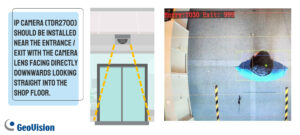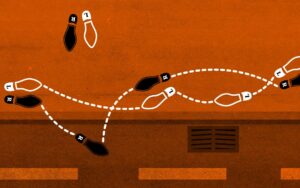
With the coronavirus ravaging most parts of the world, social distancing guidelines are being implemented by various end user entities, for example retail shops and supermarkets, who need automated solutions for proper enforcement. In this regard, people counting can play a key role.
Needless to say, covid-19 has become a major health threat that few countries can escape from. According to the latest statistics by Worldometers, the disease has thus far infected over 12 million and killed over 550,000 worldwide.
Amid covid-19’s ravage, many end user entities have shut down to avoid further spread of the disease. However, there are certain end user organizations that are deemed “essential” and thus need to remain open. That said, they have to abide by social distancing guidelines.
However, enforcement can be complex, prompting end users to turn to technology in this regard. People counting, then, becomes a viable strategy to limit the number of people who can come to the entity. With the occupancy of the entity under control, social distancing can then be better enforced.
How people counting can help

People counting has evolved a long way. In the past paper and pen were actually used, whereby the store clerk actually wrote down the number of people coming and leaving, causing accuracy issues. Today advanced solutions entailing technologies such as sensors and cameras are used to increase accuracy and efficiency.
Sensors are specifically designed to count people and work continuously. Extensive historical data and reports are also available, showing how occupancy changes over time, as well as showing how well your building complied with occupancy limits.
People counting solutions typically use sensors working in conjunction with analytics to determine the number of people coming and going. Typical sensors include the following:
- Infrared: The sensor detects a person by way of infrared radiation emitting from that person.
- Video: A camera is set up on top of the entrance and detects the number of people entering and exiting using analytics.
- Wi-Fi/Bluetooth beacons: The sensor detects visitors by the smart devices that they carry. This technology solely depends on devices carried by the visitor.
The occupancy level of the entity can be displayed on a message board that directs the visitor on what to do. For example, a good solution can monitor the number of people and occupancy level of certain areas within an end user entity. Such a solution entails people counting sensor, a software and a display unit, which may state “do not enter,” “free to go,” “cleaning required” or any other messages that the user defines, to keep the area clear of large crowds, thus allowing social distancing.
Proper setup of people counting cameras

There are various types of people counters which end user entities can use. Yet video-based people counting systems combining network cameras and people counting software offer certain advantages, for example the ability to filter out carts or other non-human objects, remote monitoring and switching to local storage in the event of power outages.
Yet for the video people counting system to work effectively, proper installation is also required. Below are tips for installing a people counting camera properly.
- Place the camera straight down over where the people are walking.
- Do not tilt the camera.
- If the floor tiles or glass window has light reflection or shadows appear on the floor, it is recommended to place a floor mat or plain carpet on the area of detection.
- The camera logo indicates the upright camera orientation. For ease of configuration, it is recommended that camera is installed with the logo facing the people passing by.
- Make sure that the doors are not opened on the detection line.
It’s also worth noting that proper lighting is necessary to make the system work effectively. The preferable light level is over 300 lux as features of moving people are hard to recognize in dark images.
The following lighting tips are recommended:
- Avoid direct sunlight in the detection areas. Direct light may leave streaks in the images or cause overexposure, affecting the picture quality.
- Remove flickering or glowing objects, such as neon lights.
- Avoid uneven illumination. Movements in the darker areas might not be detected correctly.
- Remove tilted light sources that create shadows. Shadows may blur the shape of human features.
- Adjust the color of the lighting according to actual environments to clearly separate hair from clothing. People may not be easily detected if the color of their hair and body are too similar.
Beyond people counting

In certain occasions, rather than relying on people counting, different technologies are used to enforce social distancing. For one, video combined with artificial intelligence is used in this regard. For example, one solution uses AI to monitor if there’s a gap between individuals. If not, or if the gap is not big enough, an alarm will sound off to alert those in charge.
Then, there are “virtual queue” solutions. For example, such a solution allows the visitor to enter the queue of an end user entity virtually over the Internet – they can wait, in their homes or vehicles, for their turn to enter the facility when called upon. Alternatively, you can change your delivery method to curbside pickup, which would mean even fewer direct interactions between the customer and staff.
Adapted from a&s Magazine



































































